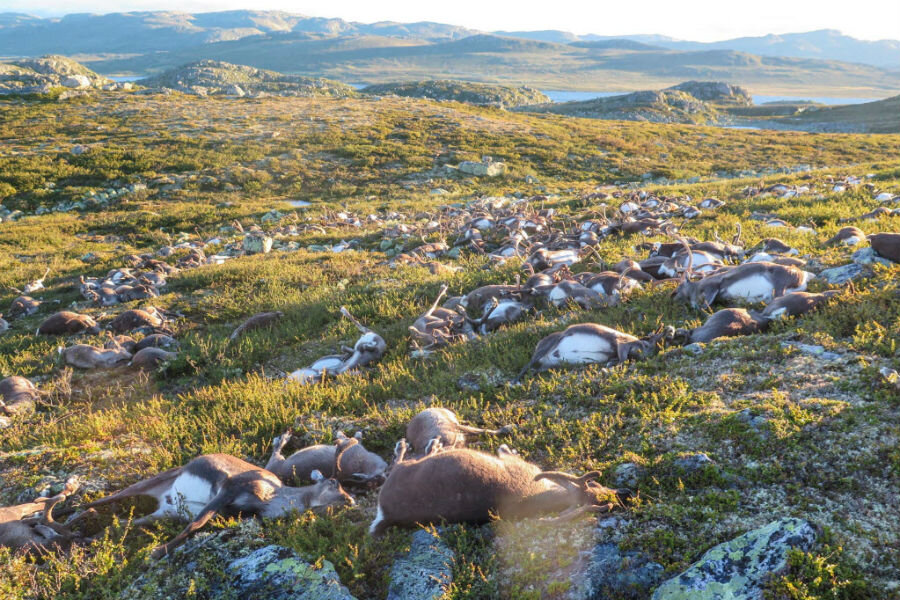80,000 reindeer die: Is their starvation caused by global warming?
Loading...
This past year has not been kind to reindeer.
In August, more than 300 wild reindeer were killed after being struck by unusually severe lightning in Norway. In July, more than 2,000 reindeer died of anthrax, a disease believed to have resurfaced after abnormally warm temperatures thawed a carcass of reindeer that died from the disease several decades ago.
But their suffering actually goes back further, a new study published in journal Biology Letters on Wednesday reports. In the Novembers of 2006 and 2013, more than 80,000 reindeer in the Arctic died of starvation as a result of warmer, wetter Arctic falls and winters. As past research has indicated that global warming tends to disproportionately affect Polar Regions, the die offs become a point of concern for scientists, potentially serving as an omen of what is to come with climate change.
“Reindeer are used to sporadic ice cover, and adult males can normally smash through ice around 2 centimetres thick,” Bruce Forbes, lead author at the University of Lapland in Finland told New Scientist. “But in 2006 and 2013, the ice was several tens of centimetres thick.”
Over the past decade, warmer Arctic winters have caused more intense and frequent rainfall in the Barents and Kara seas near the Yamal peninsula, especially during fall and winter as the rapid melting of sea ice increased humidity in the atmosphere. More “rain-on-snow” events occurred as the rain hardened into an icy layer when the temperature fell in colder seasons.
This poses a problem for reindeer. The animals typically dig through soft snow to find lichen and vegetation. But with “rain-on-snow,” the result is a “solid block of ice, frozen to the ground,” Professor Forbes told The Washington Post, forming an icy layer that the reindeer cannot penetrate.
“Herders have observed about once per decade these events are intensive and extensive enough to lead to starvation of animals, when herds cannot find soft, diggable snow,” he said.
A consecutive 24 hours of rain in 2013 followed by a rapid drop in temperature to below freezing led to the deaths of 61,000 reindeer of starvation in the Yamal Peninsula, according to the study, marking the largest recorded mortality episode in the region.
With the Arctic sea at its second-lowest ice level this summer, some are worried that a similar situation may replay itself.
"We've always known that the Arctic is going to be the early warning system for climate change," Mark Serreze, director of the National Snow and Ice Data Center said in September. "What we've seen this year is reinforcing that."
While it might serve as a harbinger for what is to come, the most immediate impact of a changing climate in the Arctics may fall on those who actually live there – traditional herders who already have had to change their ways of life to avoid starvation.
“This is just another example of the interconnections between the various components of an ecological system,” Peter Pulsifer, leader of the ELOKA project, a group that facilitates the preservation of knowledge of the Arctic by working with residents and experts, told New Scientist. “We’ve heard many concerns from residents on the potential impact of many kinds of environmental change on life and livelihoods in the Arctic.”








